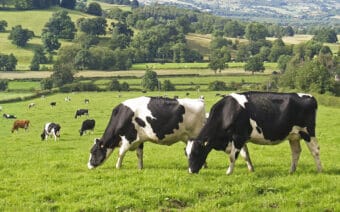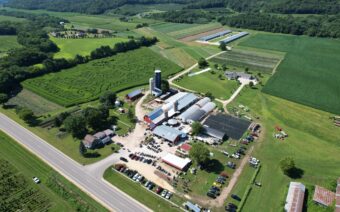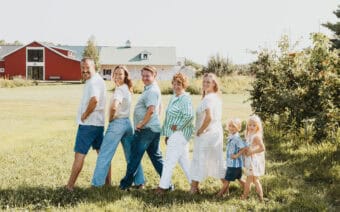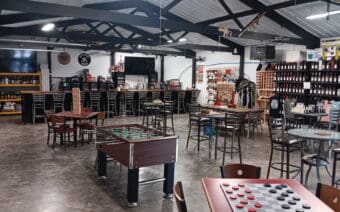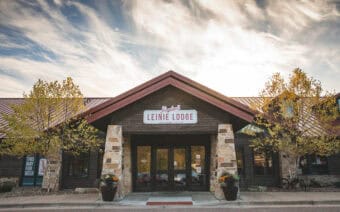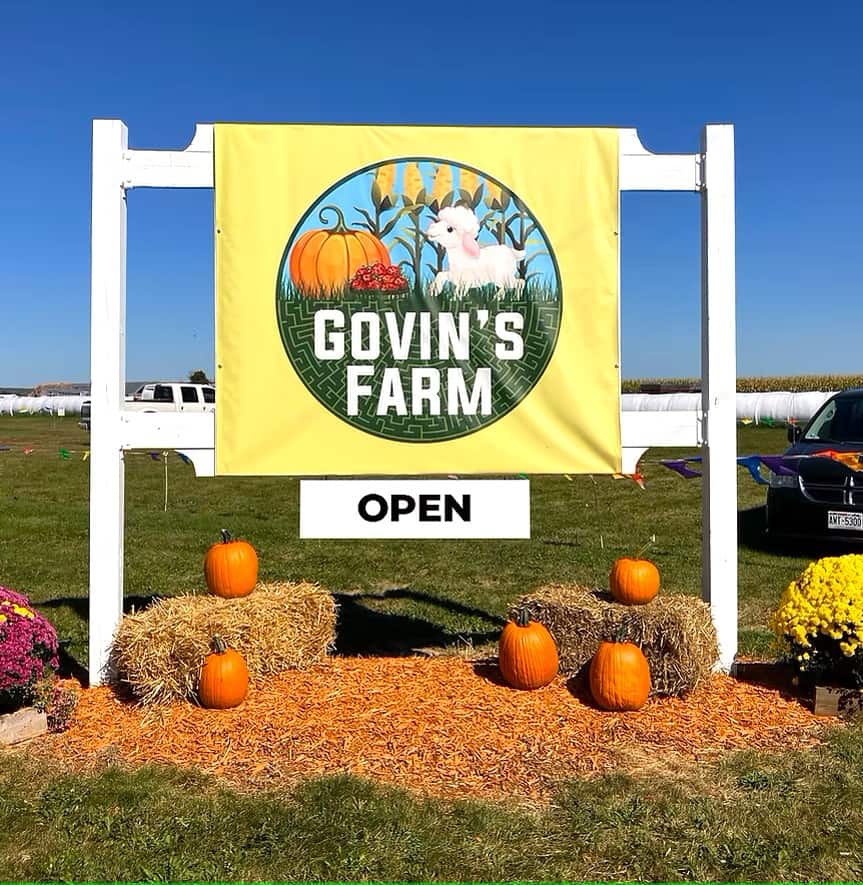
April 28, 2025
MENOMONIE – John and Julie Govin said Govin’s Farm (N6134 670th St.) has always been focused on connecting families to agriculture through educational events.
Spring, the couple said, is the optimal time for this with the birth of dozens of baby farm animals.
John said the Menomonie farm has a simple motto: “If it fits in your lap, we will help you hold it.”
Julie said Govin’s Farm is for the young and old alike.
“In the spring, you can experience all the farm babies (lambs, chicks, goats, piglets, etc.) through Farm Babies,” she said. “The farm offers six acres of strawberries, starting sometime in mid-June to early July. In the fall, we have an 11-acre corn maze, a five-acre haunted trail, along with three acres of pumpkins and lots of fun fall activities like apple and pumpkin cannons and wagon rides.”
Because they are open to the public, John said there is a “great chance to explain to people the procedures done and a great chance to see into the life of a working farm.”
“Our farm is not just an exhibit that’s set up for those five weekends – it’s the barn we earn our living from,” he said.
That, John said, is part of what sets Govin’s Farm apart – “we’re an actual working farm.”

“We’ve got a couple hundred acres of cropland and 400 head of sheep,” he said. “It’s not a typical petting farm or a petting zoo. We’re a functioning farm that allows the public in. The majority of (the acreage) is hay with a little corn thrown in for crop rotation. Typically, a lot of that hay is sold to other farms.”
Julie said Govin’s Farm has been growing strawberries since 2001, started Farm Babies in 2005 and began creating the corn maze in 2009.
“We’re blessed to have a really big barn and a lot of good staff,” she said. “We hire about 40 staff during the spring and fall to help us out. This year, we’re doing our first strawberry festival June 21-22.”
When folks come to Govin’s Farm, Julie said they aren’t just coming here for the entertainment value of it – “it’s an educational place as well.”
“We recently finished up with our last spring field trip for the year with 60 elementary kids,” she said.
Julie said they focus heavily on education at Govin’s Farm because “so many people don’t understand what farmers do and why they do what they do.”
“I (only) learned firsthand what farmers do when I met my husband,” she said.
There is always work to do
Though the typical busy season runs from the spring when the animals are born to the pumpkin patch/corn maze in the fall, the couple said that doesn’t mean the cooler months bring less work.
“The (work with the) strawberries doesn’t really end until late November or early December,” Julie said. “They get covered with straw in the fall so they are ready for the next year. There is a lot that happens to make sure everything is ready when it needs to happen, whatever season. Usually, I’m a season ahead working on stuff.”
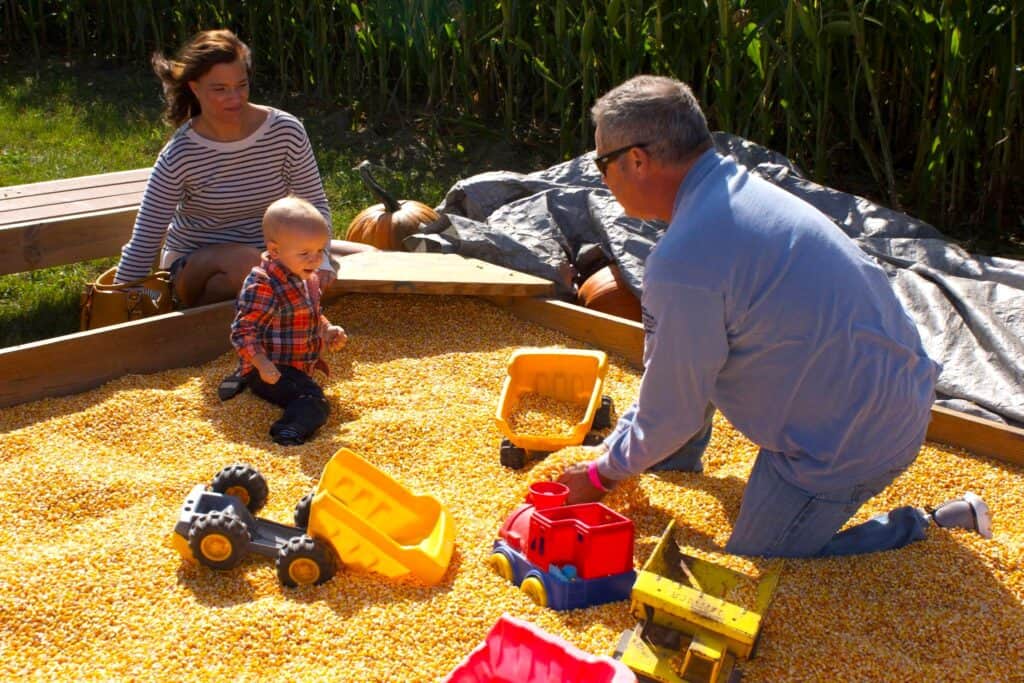
And John said not to forget that “we’re a typical livestock operating farm.”
“The animals don’t feed themselves,” he laughed. “We’ve got a heated shop where we work on equipment to get ready for the spring/summer during the winter.”
John said the shop also has a kitchen attached to it.
“It’s the building where we sell our strawberries out of in the summer,” he said. “During the off-season, it’s where we do a lot of equipment maintenance.”
Then, now, into the future
John said Govin’s Farm began in 1989 – “the year we got married.”
“We actually stopped at the bank on the way home from our wedding and signed loan papers,” he laughed.
John said he was used to farm life because he grew up in a farming family, while Julie grew up in the Twin Cities.
“We started as a typical Wisconsin dairy farm at the time, with about 70 cows and 150 acres of land,” he said. “After (doing that for a time), I could no longer cope with the stress of dairy life, so we sold the cows, did a lot of soul-searching and bought a flock of sheep. Julie was the one who came up with that idea.”
John said one of the reasons Govin’s Farm works so well is because “I’m a farmer and Julie was a hospitality major in college.”
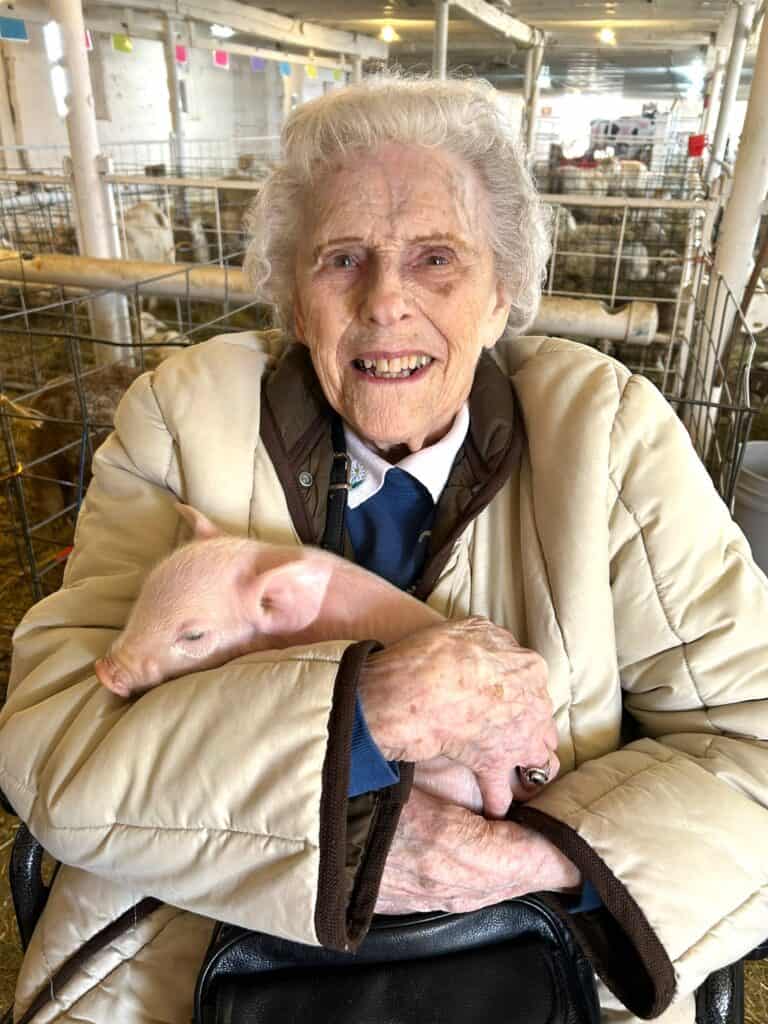
“We try to improve on everything we do every year,” Julie said.
The Govins said running the farm “keeps us young.”
“When Julie and I met, it was a chance encounter at the Minnesota State Fair,” John said. “I was showing dairy cattle, and she innocently asked me where the restrooms could be found.”
That chance meeting, John said, has since turned into nearly 36 years of marriage – “we make a great team.”
“Obviously, we’re getting closer to retirement than we were 10 years ago, but we’ll be running Govin’s Farm for the foreseeable future,” he said. “We have a son who is interested in continuing the farm work as well.”
Recent recognition
Julie said the farm was recently recognized by the Menomonie Area Chamber & Visitor Center, which named Govin’s Farm its Agribusiness of the Year.
“That was quite the honor and a complete surprise,” she said. “I think the chamber considers us the largest tourism venue in Dunn County.”
John said he thinks one of the reasons they received the award is because Govin’s Farm is “highly visible.”
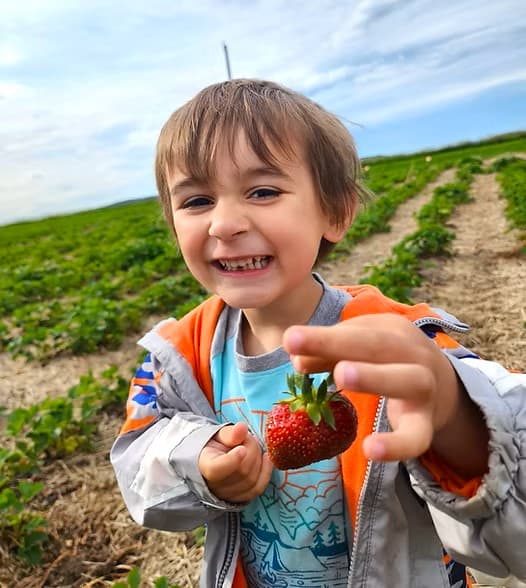
“A typical farmer probably isn’t going to get this recognition because most farmers are out farming, whereas we’re open to the public,” he said. “I guess you could say we’re noticed more.”
An agribusiness, by definition, John said, refers to the entire business and economic network surrounding agricultural production, encompassing everything from input suppliers to food processing and distribution.
Agribusiness is essentially the business of agriculture, viewed as a commercial industry rather than just farming.
For more information on Govin’s Farm, visit govinsfarm.com or find it on Facebook.
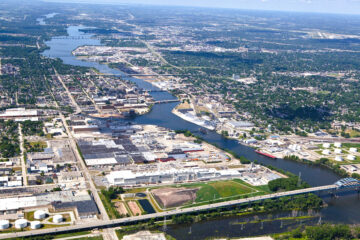 Driving NEW collaboration, diversity, opportunity
Driving NEW collaboration, diversity, opportunity A little piece of Titletown now available in West Central Wisconsin
A little piece of Titletown now available in West Central Wisconsin



